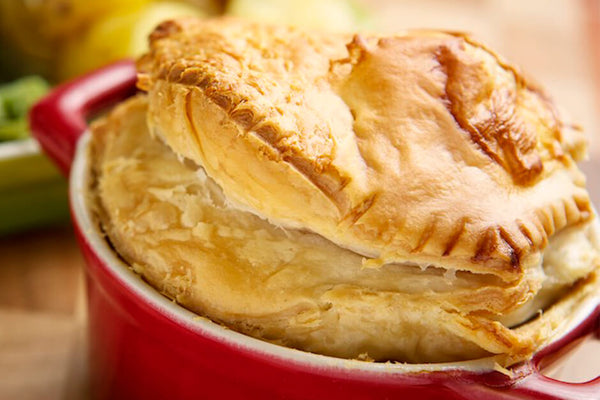Three Point One Four Pie Facts
By Sam Wass, Medium Well

Although the Ancient Egyptians are believed to have been the first to encrust food (with oats used to encrust honey), the word pie first appeared as the term ‘pyes’ in the English Middle Ages around the 13th Century, and as such we Brits can pretty much lay claim to being the original Pie Masters.
It is believed the name originates from the word ‘magpie’ although whether the bird was used as a filling, or whether it was just the form of the bird’s nest that gave the inspiration for the name is unclear.
The first variants of a pie was a simple dough casing, used to protect meat from the extreme heat of open fire, or early wood-fired ovens. Mixed with vegetables and herbs, the meat cooked slowly in these baked casings retaining its moisture without burning.
There is an argument that says the pie is the oldest form of ready meal, as once cooled these meals in the pastry casings were not just easy to handle and transport, they also lasted longer due to the protective layer provided by the pastry. These early variants, were know as ‘coffyns’ as they looked like small chest coffins, but it is widely assumed the pastry was not eaten as it was primarily used for protection so it was as hard and thick as possible. Some reports suggest the ‘coffyn’ was discarded and given to the kitchen staff while the gentry ate the filling.
During the industrial revolution of the 19th Century, housewives across Britain cooked their husbands whole meals in pie form, which were then taken down pits, mines and mills and eaten while working. These traditional pie recipes were taken by early settlers to the USA, Australia and New Zealand, and have since been adapted and developed. While savoury fillings still dominate British pies, meat and vegetables inparticular, sweet varieties filled with various fruits dominate the new pie world.
The ongoing debate of what makes a pie, will almost certainly never end. Historically a pie was a full pastry casing, and traditionalists will (rightly so in our opinion) argue that if you can’t pick it up it’s not a proper pie. Over time, and in order to save pastry, ceramic baking dishes were developed, and are still used today. Shepherd’s pie and cottage pies baked using these dishes are covered with a layer of potato (mashed, layered or grated), and this potato crust protects the meat filling (just like pastry) from drying out.
Whether you prefer a potato top or a crusty case, it’s British Pie Week, so make sure you have a good pie on your table sometime this week.